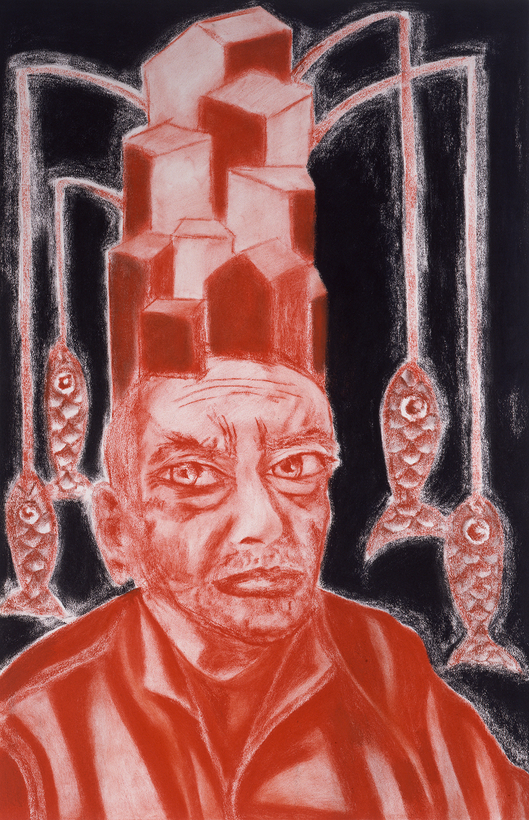The artist Francesco Clemente has long aligned himself with lyricism. He collaborated with Allen Ginsberg and Rene Ricard in the 1980s, and has taken inspiration from Federico García Lorca. “Maybe poets express more directly a sense of sympathy for other human beings,” he once said. “Painting is a little bit more of a retreat from human beings in real life; painting is more about the extreme moments when speech doesn’t help anymore.”
Clemente has certainly painted extreme moments. His 1987 work Semen, for instance, shows the artist’s naked frame suspended in an endless silver field, his face contorted in ecstasy. So, too, might his restless cosmopolitanism be described as extreme. Born in Naples in 1952, he studied architecture in Rome, began exhibiting around the Continent in the early 70s, took a formative trip to India and established a studio practice in Chennai, then jaunted to Afghanistan with Alighiero Boetti.

Clemente emigrated to New York in 1982, just in time to join the city’s Neo-Expressionist firmament, playing exquisite corpse and swapping canvases with Basquiat and Warhol, clinking Kir Royales at Mr. Chow, and walking the Paris runway for Comme des Garçons before slipping off again to India, a place that has beckoned psychically throughout his career.
Clemente rejected the day’s vogue for conceptualism and minimalism, instead gravitating toward a sensual figuration pitched toward spiritual explorations. His output has been as changeable as his address—sometimes washy watercolors or oils on canvas, sometimes small pastel and charcoal drawings or gouaches. He never inhabits a style for very long and has acknowledged as much: “I am constantly beginning, which means that I never know what I am doing.”
What Clemente’s paintings share is fluidity, an openness to the possibility of transformation, and an attempt to reconcile the fragmentation of spirit and body, an effort he has seemingly never exhausted. Fitting, then, that Clemente’s world travels and search for self are the focus of an exhibition opening July 27 at Vienna’s Albertina Museum. (It helps that the Albertina is the recent beneficiary of the gallerist Rafael Jablonka’s expansive collection of the art of the 1980s, in which many Clementes figure.)

Clemente’s frequent self-portraits are emblematic of his enigmatic approach. His figure often seems to float through Surrealist dream states, depicted with terrifyingly wide pools of eyes and other symbols of metamorphosis. Self-Portrait in White, Red and Black I (2008) finds the artist stark, a Tower of Babel fixed to his scalp and a carousel of carp dangling overhead. In The Fool (Self-Portrait) (2008–11), the artist is an itinerant hobo, bindle sack slung over his shoulder, a dog biting his bare ass as he steps through a split panel, perhaps into the next life.
Another way to think about a cosmopolitan is as a ghost floating through the material world, untethered to any one part of it. “I’m at the age where I don’t need an acid trip to feel naked … to feel that I don’t exist,” Clemente said. “A self-portrait is almost a reminder to me that I do exist.” —Max Lakin
“Francesco Clemente” opens on July 27 at the Albertina Museum, in Vienna
Max Lakin is a New York–based writer

